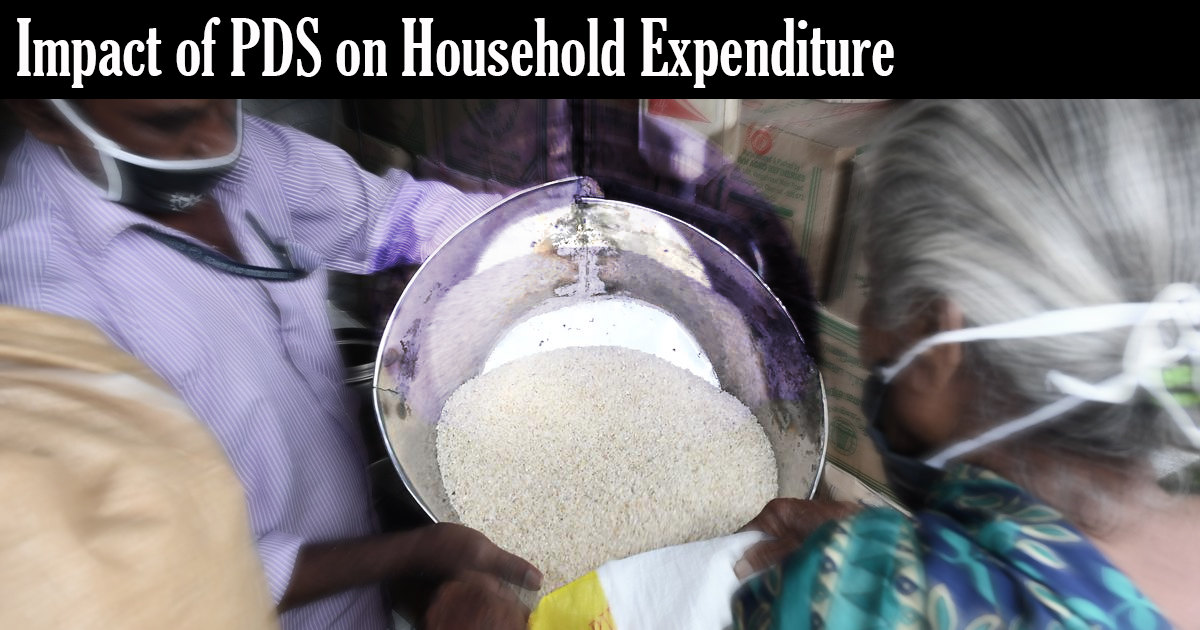
Context: The Household Consumption Expenditure Survey (HCES) 2022-23 highlights the significant impact of the Public Distribution System (PDS) on household expenditure.
Key Points:
- Food Security Coverage: The PDS covers up to 75% of the rural population and 50% of the urban population under the National Food Security Act, 2013.
- Resource Reallocation: Access to subsidized food grains through PDS allows households to allocate more funds to nutrient-rich foods such as vegetables, milk, pulses, and proteins.
- Consumption Metrics: The Imputed Monthly Per Capita Consumption Expenditure (MPCE) shows an increase when including free PDS items, with rural areas averaging ₹82 and urban areas ₹59.
- Impact on Poor Households: For the bottom 5% of households, the imputed value from PDS significantly boosts MPCE, improving their economic standing within the consumption distribution.
- Overall Contribution: Free food items from PDS account for 94% of the imputed value in rural areas and 95% in urban areas.
Challenges in Assessing PDS Impact through HCES:
- Inclusion and Exclusion Errors: Examples like the Nagrik Apurti Nigam (NAN) Scam in Chhattisgarh illustrate these errors.
- Coverage Discrepancies: HCES often reports lower program coverage compared to administrative data, suggesting a potential underestimation of PDS reach (administrative records show 80% coverage under NFSA, while surveys indicate only 60%).
- Imputation Limitations: Imputation only includes free items, not accounting for subsidized purchases from PDS, possibly undervaluing benefits.
- Survey Scope: HCES does not estimate all social welfare programs, limiting comprehensive analysis. For instance, insurance is categorized as an investment and tracked in the All India Debt & Investment Survey, not in HCES as consumption.
Recommendations to Improve PDS Impact Assessment:
- Survey Design Enhancement: Include detailed data on both free and subsidized PDS items to improve program coverage and benefit estimates.
- Error Minimization: Implement digital verification systems to reduce inclusion and exclusion errors.
- Representative Sampling: Use stratified sampling techniques to enhance representativeness.
- Periodic Reviews: Conduct regular reviews to ensure data relevance and accuracy.
- Eligibility Criteria Adjustment: Modify eligibility criteria based on updated survey findings.




